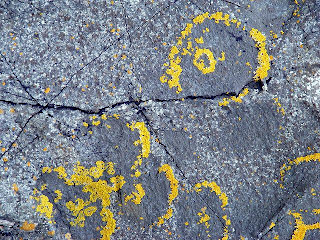445

Researchers from the Geological Society of America have found remnants of ancient microorganisms in an 830 million-year-old rock salt crystal. They believe that these organisms might still be alive and planning to crack open the crystal, Daily Mail reported. Earlier they found the remnants of algal and prokaryotic (organisms lacking cell organelles and nucleus) life in ancient halite (rock salt) crystal in the form of microscopic liquid bubbles, known as fluid inclusions. These liquid sites serve as shelters for microorganisms to live and flourish. Now the researchers are willing to open the crystal to find whether the microbes or ancient life is still alive or not. Though bringing back 830 million-year-old life into the present world doesn’t sound extraordinary nor sensible, they insist that the procedure will be done under supervision and necessary precautions will be taken.
Image Credits: Pixabay
“It does sound like a really bad B-movie, but there is a lot of detailed work that’s been going on for years to try to figure out how to do that in the safest possible way,” said Kathy Benison, study author and a geologist at West Virginia University, told NPR (National Public Radio).
The Discovery of The Ancient Life
The researchers took a sample of 830-million-year-old halite rock formed by the Browne Formation in Central Australia. The Browne Formation is the successive deposition of sand, silt and mudstone layers that have deposited 800-million-years ago in a dry lake or shallow lagoon under hot temperatures. As the water evaporated, crystals formed and got buried under mudstone layers. They used different imaging techniques such as light petrography and UV visible light petrography to study fluid inclusions and their preserved contents. The team discovered organic compounds, solids and liquids that were similar to prokaryotes and algae in terms of their shape, size and fluorescent response.
Study Outcomes
The study indicated that the terrestrial microorganisms could remain preserved in halite rock crystals over millions of years. According to the researchers, this could have implications for the search quest for alien life or existence on the earth. The exact process could also be used to find the evidence of ancient life on Mars, where salt deposits and rocks have been discovered as evidence of water reservoirs. While it seems unrealistic that microorganisms inside the rock could still be alive, living algae and prokaryotes have been discovered previously in halite approximately 250 million years ago. Therefore, the chances are less that they could have survived for 830 million years.
“Possible survival of microorganisms over geologic time scales is not fully understood,” said researchers. “It has been suggested that radiation would destroy organic matter over long time periods, yet Nicastro et al. (2002) found that buried 250 million-year-old halite was exposed to only negligible amounts of radiation. Additionally, microorganisms may survive in fluid inclusions by metabolic changes, including starvation survival and cyst stages, and coexistence with organic compounds or dead cells that could serve as nutrient sources.”
As far as researchers’ plans for opening the crystal are considered, Bonnie Boxter, a biologist at Westminster College in Salt Lake City, said that the risk of causing disease by the organism is low. “An environmental organism that has never seen a human is not going to have the mechanism to get inside of us and cause disease,” she told NPR. “So I personally, from a science perspective, have no fear of that.”
The research has been published in the journal Geology.

